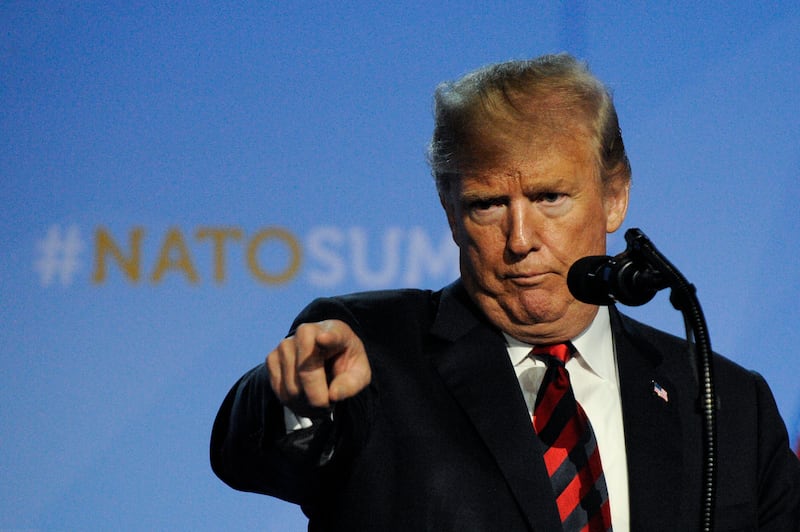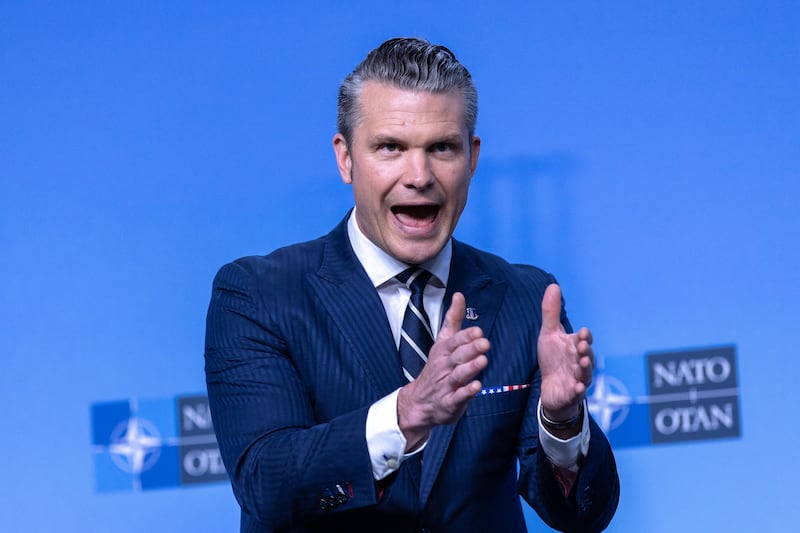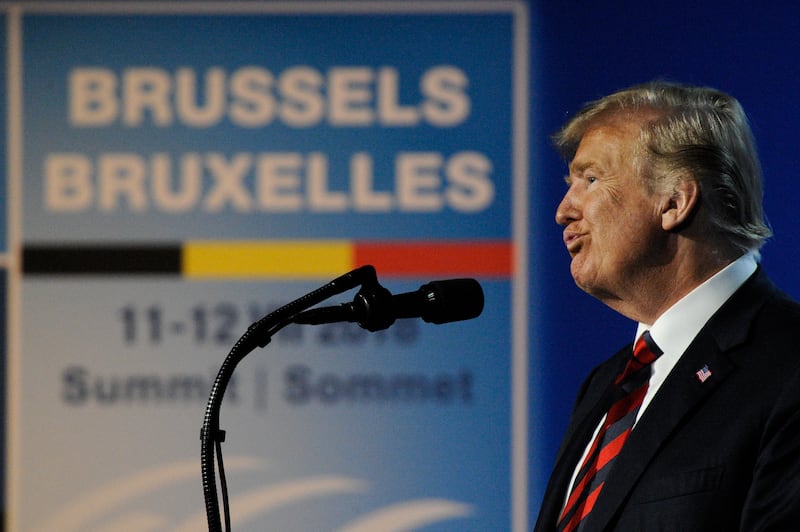Donald Trump likes to boast that he “saved” NATO during his first term as president—and in a sense he did.
By his own calculation, Trump’s threat to walk away from deadbeat European allies has so far raised an extra $680 billion from NATO member states that “weren’t paying their bills.” Even Germany, singled out by Trump for extra-harsh criticism at a bruising showdown in 2018, is finally paying its way.
But the stakes are about to get very much higher. At a landmark NATO summit this week, alliance members will be asked to endorse a staggering increase in long-term defense spending from the current 2 percent of GDP—a target the Germans and many others have just started to meet—to 5 percent.

When Trump came up with the 5 percent figure shortly before his return to the White House in January, most officials at NATO HQ in Brussels saw it as a classic Art of the Deal tactic: start off ridiculously high in the hope of squeezing an extra percentage point or so from the NATO allies.
But NATO Secretary-General Mark Rutte, who as Dutch PM helped calm Trump’s fury at the 2018 summit, expects that member states will agree that 5 percent is a reasonable target to ensure long-term American commitment to the defense of Europe and shore up military support for Ukraine.
Events in the Middle East permitting, Trump himself will be center stage at the Hague summit—his ego boosted by what he called the “obliteration” of Iranian nuclear facilities in an American strike at the weekend. If the NATO allies agree to his 5 percent target, he will no doubt claim to have “saved” the alliance once again.
Some analysts question, however, whether Trump’s victory–if he does cajole Europe into paying for its own defense bills–will be such good news for the U.S. as he appears to think.

In the Cold War years, a clear bargain underpinned the NATO alliance. Yes, the Americans far outspent all other NATO states combined to guarantee the defense of Western Europe, but that was the price of being a superpower, with the world’s most powerful defense industry.
As they step up spending, allies will be conscious that the U.S. insists on the right to veto the use of some American-made weapons in certain contexts. This has been the case in Ukraine, where it took until 2024 for then-President Joe Biden to approve the use of long-range missiles to strike inside Russia—a decision Trump has criticised, but not yet reversed.
“If there is a risk that America might one day restrict the use of weapons purchased, then the Europeans have an incentive to not buy American. It’s a card they have to play and, in my opinion, a card they should play in negotiations,” an American security source told the Daily Beast.
If Europe does come together and take its security more seriously, that fear could backfire on U.S. defense firms—especially since many now see Trump’s America as an unreliable long-term partner. Better, they might think, to buy European.
“If the Europeans do fulfil the outer limits of their ambitions, then they will eventually have an arms industry that competes with ours,” the American security source added.

More broadly, security officials fear the NATO allies are trying too hard to placate Trump and meet his arbitrary demands, rather than focus on what the alliance actually needs in the face of real threats from Russia, China, Iran and North Korea.
“We are so focused on this one summit, and that one deliverable, that we have not had an honest discussion about what’s next,” says a senior NATO diplomat. “We are becoming a short term-oriented organization instead of a long-term focused alliance.”
No one in the alliance seriously disputes that defense spending needs to be increased, especially in Europe. Decades of piecemeal spending based on assumptions that land war wouldn’t return to the continent—the so-called post-Cold War “peace dividend”—have left weapon stockpiles decimated by the need to arm Ukraine. It has left the eastern flank of NATO looking vulnerable.
There is also no denying that Trump’s hard line on European allies did force allies to increase defense spending.
To make the 5 percent target more palatable to Europeans, Rutte has proposed that 3.5 percent should be spent on hard defense—which is what the Americans already spend—with the remaining 1.5 percent made up of more ambiguous “defense-related expenditure.” The term, NATO insiders say, is sufficiently vague that it could include strategic infrastructure like roads and railways, if they are used to transport weapons, for example.
“That might mean countries try to jimmy things into their budget to reach a target, rather than sensibly spending on things they actually need,” says John Herbst, former U.S. ambassador to Ukraine.

Ahead of the summit, allies have agreed to a number of “capability targets”—objectives set out by the alliance as to what each country would need to do in the event of an operation and exactly what they need in order to fulfil their role. While these targets are not publicised for security reasons, we know that they involve a 400 percent increase in NATO air and missile defense.
It will take time, too, to identify current weaknesses and devise a long-term plan, which experts say is not necessarily compatible with hitting an arbitrary figure plucked out of thin air by Donald Trump.
An example: In 2022, the then-chancellor of Germany, Olaf Scholz, pledged to spend 100 billion euros bolstering Germany’s armed forces. The plan never really worked.
“It foundered when they realised there was no way to reasonably spend the money without reorganising their defense planning,” William Alberque, former NATO director of arms control, told the Daily Beast. “All they got out of it was a strategy that was obsolete upon publication. The core question remained—what is the right way to spend all of this money in a way that addresses the long-term security of Germany?”
Probably the hardest aspect of boosting national defense spending is justifying it to voters. By definition, spending more on one public service means taking money from another.

“If you cannot make the case that buying weapons and re-organizing your military is the most efficient—and not the most expedient—use of your budget, much less weighing those concerns against the need to upgrade infrastructure or the health-care system, you may lose votes,” says Alberque. “Worse, Russia and China are actively spreading disinformation to stoke skepticism about defense spending and the alliance with the U.S. and NATO.”
Pre-summit news coverage has focused on claims that the Trump administration insisted on limiting discussion of Ukraine. This has been reported as the White House wanting to maintain diplomatic space, so it can entice Russia to the negotiating table, rather than painting it as an enemy.
Officials point out that Ukraine will, however, still be mentioned in the final declaration, albeit in a way that allows allies some wiggle room, and Ukraine is the only non-allied country being granted a formal session with the 32 NATO members.
Asked why the issue of Ukraine had been downgraded compared to previous years, one official told the Daily Beast: “We wanted to keep it short because he [Trump] infamously doesn’t like long meetings.”
The post How Trump’s Shock NATO Success Could Blow Right Back on Him appeared first on The Daily Beast.




